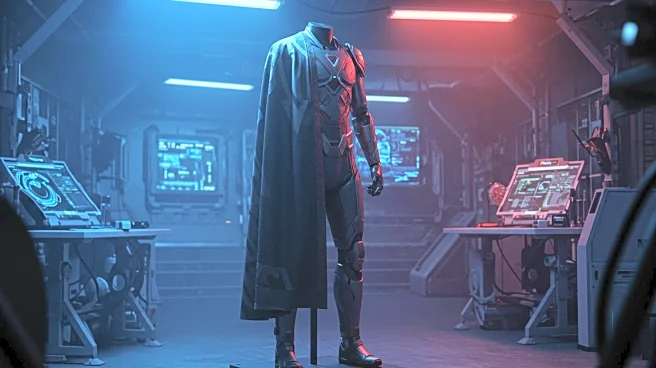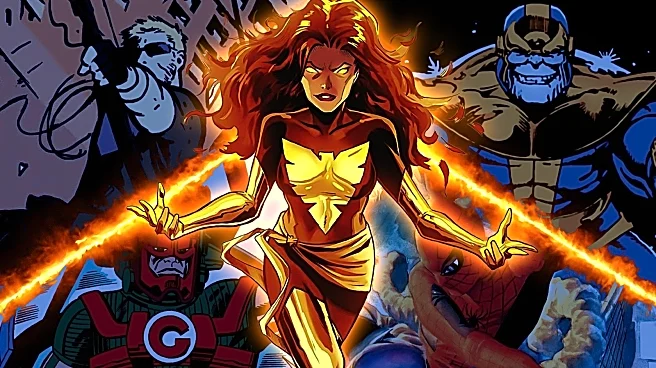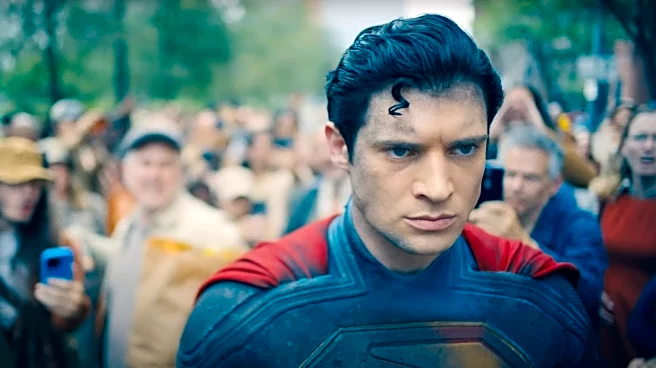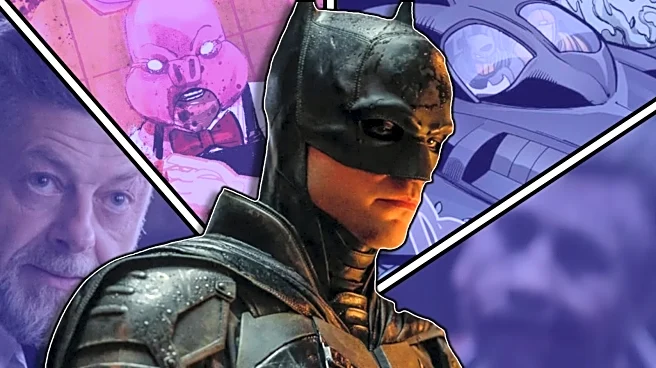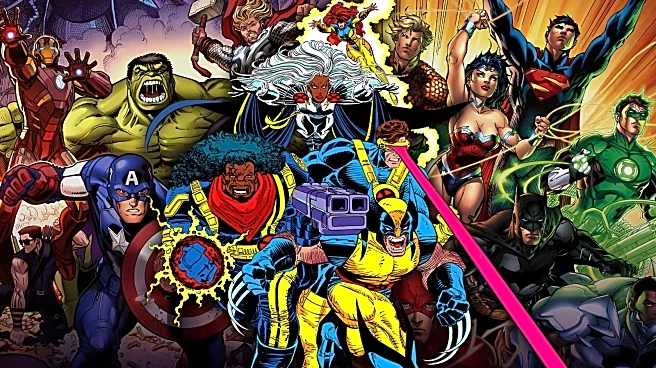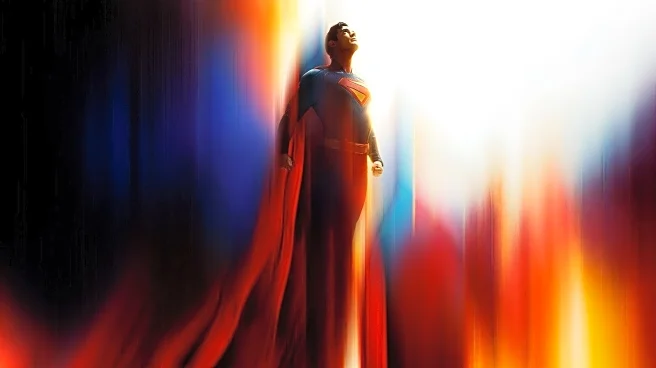
1986 was one of the most important years for American comic books ever, especially DC Comics. More than any other comic gem which debuted that year, Alan Moore and Dave Gibbons' 12-issue "Watchmen" finally gave superhero comics some literary prestige. (That's why so many insist on calling "Watchmen" a graphic novel
, not a comic.) Yet Moore wrote another comic masterpiece that same year.Frank Miller's "The Dark Knight Returns" is usually listed alongside "Watchmen" as the '86 book that changed people's
ideas of what comics could be. "Dark Knight" imagined an ending for Batman, depicting an aged Bruce Wayne coming out of retirement when Gotham City needs him again. Moore, one of Miller's contemporaries, sung the praises of "The Dark Knight Returns" when it was first published, penning a foreword for it titled "Mark of the Batman":
"Miller has also managed to shape The Batman into a true legend by introducing that element without which all true legends are incomplete and yet which for some reason hardly seems to exist in the world depicted in the average comic book, and that element is time. All of our best and oldest legends recognize that time passes and that people grow old and die [...] With 'Dark Knight,' time has come to the Batman and the capstone that makes legends what they are has finally been fitted."
Moore cites figures like Robin Hood, Davy Crockett, and the Norse gods to make his point, but he had gained experience concluding a legend himself that same year. In 1986, when "The Dark Knight Returns" was first being published, so too were Moore's "Superman" #423 and "Action Comics" #583. Together, these issues comprise "Whatever Happened to the Man of Tomorrow?", or the supposed final Superman story.
"Whatever Happened" uses a framing device set 10 years in the future. What happened 10 years ago? Superman disappeared forever — the opening page of the story depicts a memorial statue to the Man of Steel. Daily Planet journalist Tim Crane is interviewing Lois Lane (now Lois Elliot, her husband's surname) for a firsthand account of Superman's last days. Those days were the darkest ever; one-by-one, Superman's enemies attacked, having grown more violent than ever, culminating in a last showdown at the Fortress of Solitude.
Now, Moore didn't just write an ending to Superman on a lark. Marv Wolfman and George Pérez's 12-issue "Crisis on Infinite Earths," which began in 1985 and ended early in 1986, concluded the then-current DC Comics universe to set the stage for a reboot. 1986 was the birth of a new Superman in writer-artist John Byrne's "The Man of Steel" mini-series, but it was also the end for the old one.
Read more: Every Marvel Character Locked Up In The Raft
Whatever Happened To The Man Of Tomorrow? Imagined An Ending For Superman
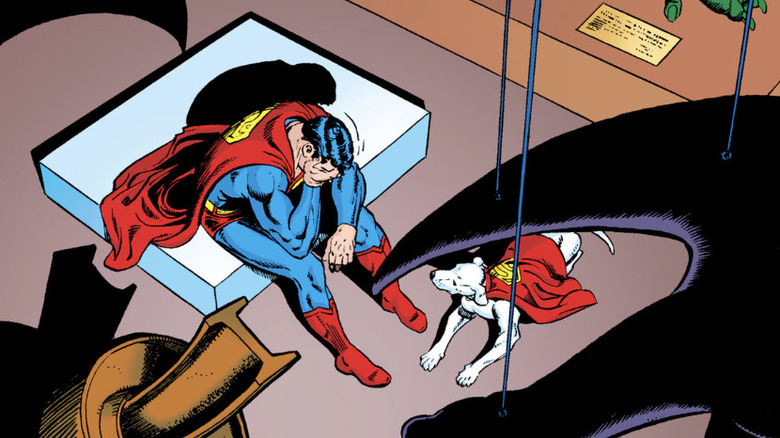
"Whatever Happened to the Man of Tomorrow?" was spearheaded by retiring DC editor Julius Schwartz. With the reboot and his own tenure ending, Schwartz decided he didn't want to leave Superman on an open, business-as-usual note:
"It was incumbent upon me to explain all the things that had been going on in the previous years. For example, did Lois ever find out that Clark Kent was Superman? Did they ever get married? What happened to Jimmy Olsen, to Perry White, to all the villains? I had to clear it up."
Schwartz initially wanted Superman's co-creator Jerry Siegel to write the story, but "legal issues" prevented this. The job instead went to Moore, then DC's superstar writer. The issues were penciled by artist Curt Swan, who had drawn many Superman comics over the years; he was thus the natural choice to close this door on Superman (a Swan song, indeed).
"Everything had such an air of finality" in Superman's last days, Lois muses, and from the covers, the story moves like a dirge. The cover of "Superman" #423 is a statue of Superman, surrounded by six panel boxes advertising story beats that seem impossible (like characters dying) but actually happen! The cover of "Action Comics" #583 is Superman flying off as his supporting cast and fellow Justice Leaguers such as Batman and Wonder Woman wave him off.
Moore frames "Whatever Happened" in the same manner as Siegel's 1961 story "Superman" #149, an "imaginary story" of what would happen if Lex Luthor succeeded in killing Superman. Moore quotes Siegel in the opening narration of "Superman" #423 by describing the pages inside as an "imaginary story which may never happen, but then again may." But he also suggests that this Schrodinger's Cat distinction of whether the story truly "counts" is meaningless, because all Superman stories are imaginary.
"Whatever Happened to the Man of Tomorrow?" stands out in how it mixes the light and dark. The book has no pretense of realism the way that "Watchmen" does. Instead, the grimness is buried beneath camp. During the first issue, Superman turns the Daily Planet globe into a giant magnet to capture an army of Metallos, Clark Kent's identity is revealed when he's attacked by Superman action figures controlled by Toyman and Prankster, and more. The only difference is that unlike "Superman" comics from the '50s, people die. Brainiac and Lex Luthor also have one of their classic team-ups, with Brainiac's head possessing Luthor's body as a puppet, putting Lex in so much pain he begs for death.
What A World Without Superman Looks Like
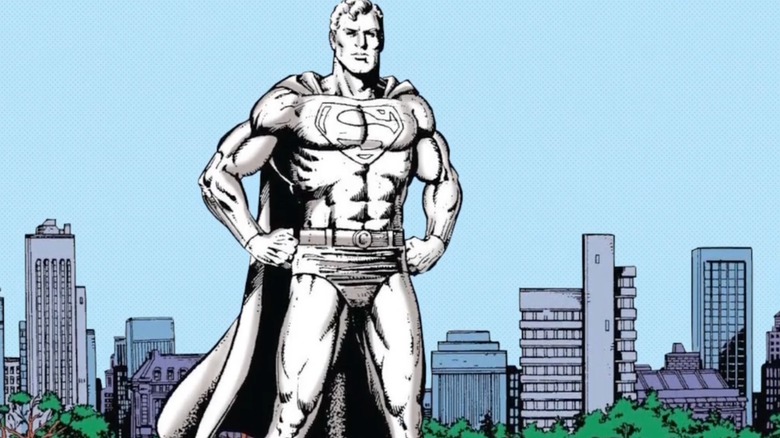
This mix of Silver Age goofiness and genuine violence makes the whole comic uncanny, but it works. If the story eschewed the fantasy of "Superman" comics, it wouldn't feel like a true ending to them, but it also needs to raise the stakes to offer a sense of finality.
To that end, most of Superman's supporting cast meets their end. Not just Superman's enemies, but his friends like Jimmy Olsen, Pete Ross, and Krypto the Superdog. Clark Kent's high school sweetheart Lana Lang gives herself superpowers to help him fight his foes ... and with her new super hearing, hears Superman tearfully admits he loves Lois more. Still, Lana flies off to help the man she loves, and then meets her end battling the Legion of Super-Villains.
These casualties, too, make this an unusual Superman story because it's not about his wondrous feats, but about him failing in the face of mounting odds. Superman's greatest defeat is when he meets the attackers' hidden mastermind, the imp Mr. Mxyzptlk. With no other way to defeat him, Superman kills Mxyzptlk by splitting his body across dimensions. Superman won the battle with another failure: By killing, he lowered himself, so he follows through by exposing himself to Gold Kryptonite and removing his powers.
The world thinks Superman wandered off and froze to death in the Arctic. Lois' story ends there, but she keeps a secret from Mr. Crane. Her husband, Jordan Elliot? That's really Superman under a new name, secretly enjoying a mundane happily ever after with the woman he loves. Despite Lois' doubts, "Jordan" assures her he's happy being normal. Superman, he's realized, was arrogant: "He thought the world couldn't get on without him." As he also wrote in "Watchmen," Moore is saying that maybe the fundamental fantasy of superheroes comics is off base and world is better off without masked crimefighters and supermen. He's asking his readers to try and reach the conclusion Jordan Elliot has and, in ending Superman, is giving us permission to let go of him.
Moore's ending fell on the deaf ears of commerce. Superman was too much of a corporate cash-cow and pop culture icon to actually end there. Just this year, after all, we've gotten a new Superman movie that people are eating up. Still, "Whatever Happened" stands up as a powerful reminder that we can all face tomorrow, without a Superman to save us.
If you're looking for the easiest way to keep up with all the major movie and TV news, why not sign up to our free newsletter?
Read the original article on SlashFilm.
